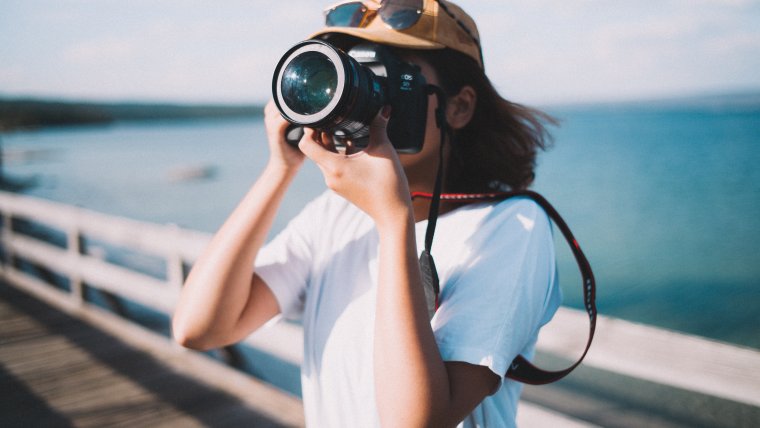
As photographers, our perception of the world around us is different. Photographer not only see what others see, but they also notice the colors, lighting, contrast as well as the composition of the world around them. Let’s discuss how a photographer can train his eyes to see the world from a camera’s perspective.
Table of Contents

When observing a scene, do you notice whether the colors are vivid and saturated or if they are muted and bland? Being aware of the colors in a scene is beneficial for photographers. For example, in bright sunlight, colors will stand out more. On the other hand, cloudy days create scenes with very bleak colors. It is also advantageous to be aware of what colors are in the scene. For example, purple and green are complementary colors and look very nice together. Another set of complementary colors is blue and yellow. A strong knowledge of colors and what looks good together helps photographers to better be able to compose their photos. As a photographer, take the time to become familiar with the color wheel. This will give you an extra edge and help you to see the world from a different perspective.

Photographers often have many lenses. A selection of lenses helps the photographer to be able to switch lenses when necessary to capture the scene from the ideal perspective. One essential skill that many photographers develop naturally over time is that of being able to see in their mind’s eye what a scene would like through a certain focal length. Photographers naturally develop this skill with the focal lengths of lenses that they own. This is especially true of photographers that primarily use prime lenses. As they become more familiar with the focal length, they’ll have a good of what the focal length looks like without having to even put the lens on the camera. Being able to do so saves time and is useful for situations when you are scouting a location but don’t have your camera on hand.

As a core element of photography, properly capturing light is one of the first skills a photographer learns. Doing so requires a proper knowledge of lighting. For example, when looking at a scene – do you notice how the subject is lit? Is the light hard or is it soft and diffused? Hard light is identifiable by the sharp shadows it creates on the objects that it lights, whereas soft light creates light and blurry shadows. Where is the source of the light? Are there multiple light sources? Most people don’t notice these things, but as photographers, it makes a big difference because the angle of the light in relation to the subject can make or break a photo. What are the color temperatures of the light sources? If they are different, you’ll need to figure out which light source is the stronger one so you can white balance for that color temperature. Asking yourself these questions and analyzing the lighting in different scenes will help you to more quickly identify what type of lighting is in a scene. As a result, you’ll be equipped to make the most of whatever ambient lighting is available when taking photos.

Although technically a part of lighting, the importance of contrast means it deserves its own section. The contrast of a scene can affect the overall mood of a photo. Low contrast photos can be seen in two unique styles of photography: low-key photography and high-key photography. Low key photography uses mainly dark tones to create a dramatic looking image, usually a portrait. The end result is a strong and even scary or romantic photo. On the opposite end is high key photography, which involves bright lighting to the point of eliminating all or most of the shadows in an image. This creates an airy and happy mood. Taking either type of photo requires careful management of the available light and sometimes even altering the light through equipment and/or flash unit(s). Most often, low key and high key photos are the creative choices of the photographer. This means that the photographer needs to have proper forethought and preparation to achieve these types of photos.
Happy shooting!
Comments (0)
There are no comments yet.